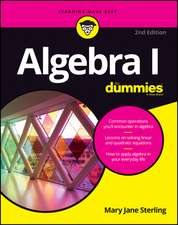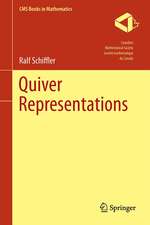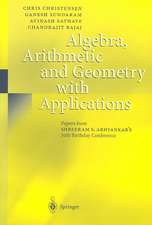Elasticity: Solid Mechanics and Its Applications, cartea 172
Autor J. R. Barberen Limba Engleză Hardback – 10 dec 2009
| Toate formatele și edițiile | Preț | Express |
|---|---|---|
| Paperback (1) | 583.17 lei 39-44 zile | |
| Springer International Publishing – 25 feb 2024 | 583.17 lei 39-44 zile | |
| Hardback (2) | 673.96 lei 39-44 zile | |
| Springer International Publishing – 24 feb 2023 | 673.96 lei 39-44 zile | |
| SPRINGER NETHERLANDS – 10 dec 2009 | 786.12 lei 6-8 săpt. |
Din seria Solid Mechanics and Its Applications
- 20%
 Preț: 698.09 lei
Preț: 698.09 lei - 24%
 Preț: 800.14 lei
Preț: 800.14 lei - 15%
 Preț: 629.29 lei
Preț: 629.29 lei - 15%
 Preț: 642.16 lei
Preț: 642.16 lei - 18%
 Preț: 1105.93 lei
Preț: 1105.93 lei - 15%
 Preț: 633.00 lei
Preț: 633.00 lei - 18%
 Preț: 1100.48 lei
Preț: 1100.48 lei - 20%
 Preț: 573.17 lei
Preț: 573.17 lei - 18%
 Preț: 1580.73 lei
Preț: 1580.73 lei - 17%
 Preț: 459.40 lei
Preț: 459.40 lei - 18%
 Preț: 943.79 lei
Preț: 943.79 lei - 18%
 Preț: 735.09 lei
Preț: 735.09 lei -
 Preț: 388.55 lei
Preț: 388.55 lei -
 Preț: 739.84 lei
Preț: 739.84 lei - 18%
 Preț: 781.36 lei
Preț: 781.36 lei -
 Preț: 399.45 lei
Preț: 399.45 lei - 15%
 Preț: 628.32 lei
Preț: 628.32 lei - 24%
 Preț: 784.82 lei
Preț: 784.82 lei - 15%
 Preț: 632.51 lei
Preț: 632.51 lei - 18%
 Preț: 941.91 lei
Preț: 941.91 lei - 18%
 Preț: 1207.43 lei
Preț: 1207.43 lei - 18%
 Preț: 721.90 lei
Preț: 721.90 lei - 18%
 Preț: 1212.25 lei
Preț: 1212.25 lei - 18%
 Preț: 1215.32 lei
Preț: 1215.32 lei - 18%
 Preț: 943.97 lei
Preț: 943.97 lei - 18%
 Preț: 891.17 lei
Preț: 891.17 lei - 18%
 Preț: 948.27 lei
Preț: 948.27 lei - 20%
 Preț: 978.95 lei
Preț: 978.95 lei - 18%
 Preț: 937.56 lei
Preț: 937.56 lei - 18%
 Preț: 1218.74 lei
Preț: 1218.74 lei - 18%
 Preț: 946.12 lei
Preț: 946.12 lei - 18%
 Preț: 948.27 lei
Preț: 948.27 lei - 18%
 Preț: 897.71 lei
Preț: 897.71 lei - 18%
 Preț: 1206.19 lei
Preț: 1206.19 lei - 18%
 Preț: 929.53 lei
Preț: 929.53 lei
Preț: 786.12 lei
Preț vechi: 958.69 lei
-18% Nou
Puncte Express: 1179
Preț estimativ în valută:
150.49€ • 154.77$ • 124.85£
150.49€ • 154.77$ • 124.85£
Carte tipărită la comandă
Livrare economică 20 februarie-06 martie
Preluare comenzi: 021 569.72.76
Specificații
ISBN-13: 9789048138081
ISBN-10: 9048138086
Pagini: 556
Ilustrații: XIX, 534 p.
Dimensiuni: 155 x 235 x 43 mm
Greutate: 0.95 kg
Ediția:3rd ed. 2010
Editura: SPRINGER NETHERLANDS
Colecția Springer
Seria Solid Mechanics and Its Applications
Locul publicării:Dordrecht, Netherlands
ISBN-10: 9048138086
Pagini: 556
Ilustrații: XIX, 534 p.
Dimensiuni: 155 x 235 x 43 mm
Greutate: 0.95 kg
Ediția:3rd ed. 2010
Editura: SPRINGER NETHERLANDS
Colecția Springer
Seria Solid Mechanics and Its Applications
Locul publicării:Dordrecht, Netherlands
Public țintă
GraduateCuprins
Part I GENERAL CONSIDERATIONS ; 1 Introduction; 1.1 Notation for stress and displacement ; 1.1.1 Stress; 1.1.2 Index and vector notation and the summationconvention; 1.1.3 Vector operators in index notation; 1.1.4 Vectors, tensors and transformation rules; 1.1.5 Principal stresses and Von Mises stress ; ; 1.1.6 Displacement; ; 1.2 Strains and their relation to displacements; ; 1.2.1 Tensile strain; ; 1.2.2 Rotation and shear strain; ; 1.2.3 Transformation of co¨ordinates; ; 1.2.4 Definition of shear strain; ; 1.3 Stressstrain relations; ; 1.3.1 Lam´e’s content; 1.3.2 Dilatation and bulk modulus ; PROBLEMS; 2 Equilibrium and compatibility; 2.1 Equilibrium equations ; 2.2 Compatibility equations; 2.2.1 The significance of the compatibility equations ; 2.3 Equilibrium equations in terms of displacements ; PROBLEMS; Part II TWODIMENSIONAL PROBLEMS ; 3 Plane strain and plane stress ; 3.1 Plane strain ; 3.1.1 The corrective solution; 3.1.2 SaintVenant’s principle ; 3.2 Plane stress; 3.2.2 Relationship between plane stress and plane strain; PROBLEMS; 4 Stress function formulation ; 4.1 The concept of a scalar stress function ; 4.2 Choice of a suitable form ; 4.3 The Airy stress function; 4.3.1 Transformation of co¨ordinates; 4.3.2 Nonzero body forces ; 4.4 The governing equation ; 4.4.1 The compatibility condition ; 4.4.2 Method of solution ; 4.4.3 Reduced dependence on elastic constants ; PROBLEMS; 5 Problems in rectangular co¨ordinates ; 5.1 Biharmonic polynomial functions ; 5.1.1 Second and third degree polynomials; 5.2 Rectangular beam problems ; 5.2.1 Bending of a beam by an end load; 5.2.2 Higher order polynomials — a general strategy; 5.2.3 Manual solutions — symmetry considerations ; 5.3 Fourier series and transform solutions ; 5.3.1 Choice of form ; 5.3.2 Fourier transforms; PROBLEMS; 6 End effects ; 6.1 Decaying solutions; 6.2 The corrective solution; 6.2.1 Separatedvariable solutions ; 6.2.2 The eigenvalue problem ; 6.3 Other SaintVenant problems; 6.4 Mathieu’s solution; PROBLEMS; 7 Body forces ; 7.1 Stress function formulation ; 7.1.1 Conservative vector fields; 7.1.2 The compatibility condition ; 7.2 Particular cases ; 7.2.1 Gravitational loading ; 7.2.2 Inertia forces ; 7.2.3 Quasistatic problems; 7.2.4 Rigidbody kinematics ; 7.3 Solution for the stress function ; 7.3.1 The rotating rectangular beam; 7.3.2 Solution of the governing equation;7.4 Rotational acceleration; 7.4.1 The circular disk ; 7.4.2 The rectangular bar; 7.4.3 Weak boundary conditions and the equation of motion; PROBLEMS; 8 Problems in polar co¨ordinates ; 8.1 Expressions for stress components; 8.2 Strain components; 8.3 Fourier series expansion; ; 8.3.1 Satisfaction of boundary conditions; 8.3.3 Degenerate cases ; 8.4 The Michell solution ; 8.4.1 Hole in a tensile field ; PROBLEMS; 9 Calculation of displacements ; 9.1 The cantilever with an end load ; 9.1.1 Rigidbody displacements and end conditions ; 9.1.2 Deflection of the free end; 9.2 The circular hole ; 9.3 Displacements for the Michell solution ; 9.3.1 Equilibrium considerations ; 9.3.2 The cylindrical pressure vessel ; PROBLEMS; 10 Curved beam problems ; 10.1 Loading at the ends; 10.1.1 Pure bending ;;10.1.2 Force transmission; 10.2 Eigenvalues and eigenfunctions ; 10.3 The inhomogeneous problem; 10.3.1 Beam with sinusoidal loading ; 10.3.2 The nearsingular problem; 10.4 Some general considerations ; 10.4.1 Conclusions; PROBLEMS; 11 Wedge problems ; 11.1 Power law tractions; 11.1.1 Uniform tractions ; 11.1.2 The rectangular body revisited; 11.1.3 More general uniform loading ; 11.1.4 Eigenvalues for the wedge angle ; 11.2 Williams’ asymptotic method ; 11.2.1 Acceptable singularities ; 11.2.2 Eigenfunction expansion; 11.2.3 Nature of the eigenvalues; 11.2.4 The singular stress fields ; 11.2.5 Other geometries; 11.3 General loading of the faces; PROBLEMS; 12 Plane contact problems ; 12.1 Selfsimilarity ; 12.2 The Flamant Solution; 12.3 The halfplane; 12.3.1 The normal forceFy; 12.3.2 The tangential force Fx; 12.3.3 Summary; 12.4 Distributed normal tractions; 12.5 Frictionless contact problems; 12.5.1 Method of solution ; 12.5.2 The flat punch ; 12.5.3 The cylindrical punch (Hertz problem) ; 12.6 Problems with two deformable bodies ; 12.7 Uncoupled problems ; 12.7.1 Contact of cylinders ; 12.8 Combined normal and tangential loading ; 12.8.1 Cattaneo and Mindlin’s problem ; 12.8.2 Steady rolling: Carter’s solution ; PROBLEMS; 13 Forces dislocations and cracks ; 13.1 The Kelvin solution; 13.1.1 Body force problems; 13.2 Dislocations ; 13.2.1 Dislocations in Materials Science ; 13.2.2 Similarities and differences ; 13.2.3 Dislocations as Green’s functions ; 13.2.4 Stress concentrations ; 13.3 Crack problems ; 13.3.1 Linear Elastic Fracture Mechanics ; 13.3.2 Plane crack in a tensile field ; 13.3.3 Energy release rate ; 13.4 Method of images ; PROBLEMS; 14 Thermoelasticity ; 14.1 The governing equation;14.2 Heat conduction; 14.3 Steadystate problems; 14.3.1 Dundurs’ Theorem ; PROBLEMS; 15 Antiplane shear ; 15.1 Transformation of coordinates; 15.2 Boundary conditions; 15.3 The rectangular bar ; 15.4 The concentrated line force ; 15.5 The screw dislocation ; PROBLEMS; Part III END LOADING OF THE PRISMATIC BAR ; 16 Torsion of a prismatic bar ; 16.1 Prandtl’s stress function; 16.1.1 Solution of the governing equation; 16.2 The membrane analogy ; 16.3 Thinwalled open sections ; 16.4 The rectangular bar ; 16.5 Multiply connected (closed) sections ; 16.5.1 Thinwalled closed sections ; PROBLEMS; 17 Shear of a prismatic bar ; 17.1 The semiinverse method ; 17.2 Stress function formulation ; 17.3 The boundary condition; 17.3.1 Integrability ; 17.3.2 Relation to the torsion problem ; 17.4 Methods of solution; 17.4.1 The circular bar; 17.4.2 The rectangular bar ; PROBLEMS; Part IV COMPLEX VARIABLE FORMULATION ; 18 Preliminary mathematical results ; 18.1 Holomorphic functions ; 18.2 Harmonic functions; 18.3 Biharmonic functions ; 18.4Expressing real harmonic and biharmonic functions incomplex form ; 18.4.1 Biharmonic functions ; 18.5 Line integrals ; 18.5.1 The residue theorem; 18.5.2 The Cauchy integral theorem ; 18.6 Solution of harmonic boundary value problems ; 18.6.1 Direct method for the interior problem for a circle ; 18.6.2 Direct method for the exterior problem for a circle; 18.6.3 The half plane ; 18.7 Conformal mapping; PROBLEMS; 19 Application to elasticity problems ; 19.1 Representation of vectors; 19.1.1 Transformation of co¨ordinates; 19.2 The antiplane problem ; 19.2.1 Solution of antiplane boundaryvalue problems ; 19.3 Inplane deformations; 19.3.1 Expressions for stresses ; 19.3.2 Rigidbody displacement ; 19.4 Relation between the Airy stress function and the complexpotentials ;19.5 Boundary tractions ; 19.5.1 Equilibrium considerations ; 19.6 Boundaryvalue problems; 19.6.1 Solution of the interior problem for the circle ; 19.6.2 Solution of the exterior problem for the circle ; 19.7 Conformal mapping for inplane problems ; 19.7.1 The elliptical hole ; PROBLEMS; Part V THREE DIMENSIONAL PROBLEMS ; 20 Displacement function solutions ; 20.1 The strain potential ; 20.2 The Galerkin vector ; 20.3 The PapkovichNeuber solution ; 20.3.1 Change of co¨ordinate system; 20.4 Completeness and uniqueness; 20.4.1 Methods of partial integration; 20.5 Body forces; 20.5.1 Conservative body force fields 20.5.2 Nonconservative body force fields PROBLEMS; 21 The Boussinesq potentials; 21.1 Solution A : The strain potential; 21.2 Solution B 21.3; Solution E : Rotational deformation; 21.4 Other co¨ordinate systems; 21.4.1 Cylindrical polar co¨ordinates; 21.4.2 Spherical polar co¨ordinates; 21.5 Solutions obtained by superposition; 21.5.1 Solution F : Frictionless isothermal contact problems; 21.5.2 Solution G: The surface free of normal traction; 21.6 A threedimensional complex variable solution; PROBLEMS; 22 Thermoelastic displacement potentials; 22.1 Plane problems; 22.1.1 Axisymmetricproblems for the cylinder ; 22.1.2 Steadystate plane problems ; 22.1.3 Heat flow perturbed by a circular hole ; 22.1.4 Plane stress ; 22.2 The method of strain suppression; 22.3 Steadystate temperature : Solution T; 22.3.1 Thermoelastic plane stress; PROBLEMS; 23 Singular solutions ; 23.1 The source solution; 23.1.1 The centre of dilatation; 23.1.2 The Kelvin solution ; 23.2 Dimensional considerations ; 23.2.1 The Boussinesq solution; 23.3 Other singular solutions ; 23.4 Image methods; 23.4.1 The tractionfree half space; PROBLEMS; 24 Spherical harmonics ; 24.1 Fourier series solution; 24.2 Reduction to Legendre’s equation; 24.3 Axisymmetric potentials and Legendre polynomials ; 24.3.1 Singular spherical harmonics; 24.3.2 Special cases; 24.4 Nonaxisymmetric harmonics ; 24.5 Cartesian and cylindrical polar co¨ordinates; 24.6 Harmonic potentials with logarithmic terms; 24.6.1 Logarithmic functions for cylinder problems ; 24.7 Nonaxisymmetric cylindrical potentials ; 24.8 Spherical harmonics in complex notation ; 24.8.1 Bounded cylindrical harmonics; 24.8.2 Singular cylindrical harmonics ; PROBLEMS; 25 Cylinders and circular plates ; 25.1 Axisymmetric problems for cylinders; 25.1.1 The solid cylinder ; 25.1.2 The hollow cylinder; 25.2 Axisymmetric circular plates; 25.2.1 Uniformly loaded plate on a simple support; 25.3 Nonaxisymmetric problems ; 25.3.1 Cylindrical cantilever with an end load; ; PROBLEMS; 26 Problems in spherical co¨ordinates; 26.1 Solid and hollow spheres ; 26.1.1 The solid sphere in torsion; 26.1.2 Spherical hole in a tensile field; 26.2 Conical bars ; 26.2.1 Conical bar transmitting an axial force; 26.2.2 Inhomogeneous problems ; 26.2.3 Nonaxisymmetric problems ; PROBLEMS; 27 Axisymmetric torsion ; 27.1 The transmitted torque ; 27.2 The governing equation ; 27.3 Solution of the governing equation; 27.4 The displacement field ; 27.5 Cylindrical and conical bars; 27.5.1 The centre of rotation; 27.6 The Saint Venant problem; PROBLEMS; 28 Theprismatic bar ; 28.1 Power series solutions; 28.1.1 Superposition by differentiation ; 28.1.2 The problems P0 and P1 Properties of the solution to Pm ; 28.2 Solution of Pm by integration ; 28.3 The integration process ; 28.4 The twodimensional problem ; 28.5.1The corrective antiplane solution ; 28.5.2 The circular bar; 28.6 The corrective inplane solution; 28.7 Corrective solutions using real stress functions ; 28.7.1 Airy function ; 28.7.2 Prandtl function ; 28.8 Solution procedure ; 28.9 Example ; 28.9.1 Problem ; 28.9.3 End conditions; PROBLEMS; 29 Frictionless contact ; 29.1 Boundary conditions; 29.1.1 Mixed boundaryvalue problems; 29.2 Determining the contact area ; 29.3 Contact problems involving adhesive forces ; 30 The boundaryvalue problem ; 30.1 Hankel transform methods; 30.2 Collins’ Method ; 30.2.1 Indentation by a flat punch; 30.2.2 Integral representation; 30.2.3 Basic forms and surface values ; 30.2.4 Reduction to an Abel equation; 30.2.5 Smooth contact problems; 30.2.6 Choice of form; 30.3 Nonaxisymmetric problems ; 30.3.1 The full stress field ; PROBLEMS; 31 The pennyshaped crack ; 31.1 The pennyshaped crack in tension ; 31.2 Thermoelastic problems ; PROBLEMS; 32 The interface crack ; 32.1 The uncracked interface ; 32.2 The corrective solution; 32.2.1 Global conditions; 32.2.2 Mixed conditions ; 32.3 The pennyshaped crack in tension ; 32.3.1 Reduction to a single equation ; 32.3.2 Oscillatory singularities ; 32.4 The contact solution ; 32.5 Implications for Fracture Mechanics 33 Variational methods ; 33.1 Strain energy ; 33.1.1 Strain energy density ; 33.2 Conservation of energy ; 33.3 Potential energy of the external forces; 33.4 Theorem of minimum total potential energy ; 33.5 Approximate solutions — the RayleighRitz method ; 33.6 Castigliano’s second theorem; 33.7 Approximations using Castigliano’s second theorem; 33.7.1 The torsion problem ; 33.7.2 The inplane problem; 33.8 Uniqueness and existence of solution ;33.8.1 Singularities ; PROBLEMS; 34 The reciprocal theorem ; 34.1 Maxwell’s Theorem ; 34.2 Betti’s Theorem; 34.3 Use of the theorem ; 34.3.1 A tilted punch problem; 34.3.2 Indentation of a halfspace; 34.4 Thermoelastic problems ; PROBLEMS; A Using Maple and Mathematica.
Textul de pe ultima copertă
This is a first year graduate textbook in Linear Elasticity. It is written with the practical engineering reader in mind, dependence on previous knowledge of solid mechanics, continuum mechanics or mathematics being minimized. Emphasis is placed on engineering applications of elasticity and examples are generally worked through to final expressions for the stress and displacement fields in order to explore the engineering consequences of the results.
The topics covered are chosen with a view to modern research applications in fracture mechanics, composite materials, tribology and numerical methods. Thus, significant attention is given to crack and contact problems, problems involving interfaces between dissimilar media, thermoelasticity, singular asymptotic stress fields and three-dimensional problems.
This third edition includes new chapters on complex variable methods, variational methods and three-dimensional solutions for the prismatic bar. Other detailed changes have been made throughout the work, many suggested by users of earlier editions.
The new edition includes over 300 end-of-chapter problems, expressed wherever possible in the form they would arise in engineering - i.e. as a body of a given geometry subjected to prescribed loading - instead of inviting the student to 'verify' that a given candidate stress function is appropriate to the problem. Solution of these problems is considerably facilitated by the use of modern symbolic mathematical languages such as Maple and Mathematica. Electronic files and hints on this method of solution, as well as further supplementary software are available for download via the webpage for this volume on www.springer.com.
The topics covered are chosen with a view to modern research applications in fracture mechanics, composite materials, tribology and numerical methods. Thus, significant attention is given to crack and contact problems, problems involving interfaces between dissimilar media, thermoelasticity, singular asymptotic stress fields and three-dimensional problems.
This third edition includes new chapters on complex variable methods, variational methods and three-dimensional solutions for the prismatic bar. Other detailed changes have been made throughout the work, many suggested by users of earlier editions.
The new edition includes over 300 end-of-chapter problems, expressed wherever possible in the form they would arise in engineering - i.e. as a body of a given geometry subjected to prescribed loading - instead of inviting the student to 'verify' that a given candidate stress function is appropriate to the problem. Solution of these problems is considerably facilitated by the use of modern symbolic mathematical languages such as Maple and Mathematica. Electronic files and hints on this method of solution, as well as further supplementary software are available for download via the webpage for this volume on www.springer.com.
Caracteristici
Expansion of topics to include more on complex variable methods, variational methods and three-dimensional plate and beam solutions Additional end-of-chapter problems Detailed improvements elsewhere, some suggested by users of the earlier editions Modern treatment of the subject Clarity of presentation Supplementary electronic files in Mathematica and Maple available for download Includes supplementary material: sn.pub/extras
Notă biografică
J. R. Barber graduated in Mechanical Sciences from Cambridge University in 1963 and joined British Rail, who later sponsored his research at Cambridge between 1965 and 1968 on the subject of thermal effects in braking systems. In 1969 he became Lecturer and later Reader in Solid Mechanics at the University of Newcastle upon Tyne. In 1981 he moved to the University of Michigan, where he is presently Jon R. and Beverly S. Holt Professor of Engineering and Arthur F. Thurnau Professor of Mechanical Engineering and Applied Mechanics. He is a Chartered Engineer in the U.K., Fellow of the Institution of Mechanical Engineers, and has engaged extensively in consulting work in the field of stress analysis for engineering design.
He is author of three books (‘Elasticity’, ‘Intermediate Mechanics of Materials’ and ‘Contact Mechanics’) and over 200 articles in the fields of Elasticity, Thermoelasticity, Contact Mechanics, Tribology, Heat Conduction and Elastodynamics. He is a recipient of the Drucker Medal, the Ted Belytschko Applied Mechanics Award and the Mayo D. Hersey Award of ASME and the Archie Higdon Distinguished Educator Award of ASEE. He has served as Associate Editor of the ASME Journal of Applied Mechanics, Mathematical Problems in Engineering, and ASME Journal of Tribology, and is co-Editor of the Springer book series Solid Mechanics and its Applications, and a member of the editorial boards of the International Journal of Mechanical Sciences, the Journal of Thermal Stresses and Acta Tribologica.



















